Das Olympische Bildungsmagazin
Jérôme Champagne: „Which FIFA for the twenty-first century?“
- Jerome Champagne
- 16. Januar 2012
- 11:38
- 21 Kommentare
Ok, some observers are thinking this man is a potential FIFA president. Some may think, the following words can be read as a presidential manifesto.
The name of the author?
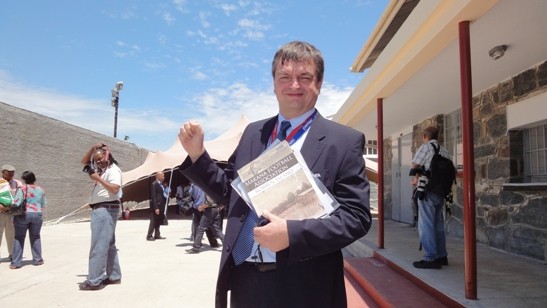
Once upon a time, in FIFA uniform: Robben Island, December 2009
I have always seen him as one of the top five competent officials in the whole Olympic World. But, he has two major problems: Champagne is not a member of FIFA’s gerontocracy. And he is too good. He became too influential and dangerous for all powerholders in FIFA: the President, the General Secretary, some Executives. That’s why he was fired two years ago.
After almost two years of silence (but years of influential work on different fields) he strikes back.
Read his programme, which he has sent out last weekend to all 208 National Federations. It may differ from another, a journalistic manifesto :) – The Real Road Map: investigate corruption in FIFA, what should be happening? – but it comes from inside. And it is, in general, astonishing.
Here it is, in length.
By Jérôme Champagne
WHICH FIFA FOR THE TWENTY-FIRST CENTURY?
Two years ago, exactly today, I had to leave FIFA having served there during eleven years with passion, dedication, for the football associations composing it and for football which is FIFA’s raison d’être.
The circumstances of my departure (see here attached FIFA press release dated 15th January 2010) have no other value than anecdotal and now form part of my past.
In these past two years and in spite of many requests, I remained silent and have not expressed myself on FIFA, its current affairs and its situation. I limited my public comments to my football consulting activities and to what I have been privileged to implement for Palestinian football alongside local FA President, Mr. Jibril Rajoub. In 2010, I spoke on several opportunities on the meaning for Africa and the rest of the world of the first FIFA World Cup organized in Black Africa, a project I have always considered as central towards the vision of a fairer and less racist world. Similarly, I defended in some French media the reform on bi-national players and the purpose of the changes in 2003 and 2009 of the FIFA regulations on that particular topic of bi-national players unfairly blocked in their international career.
But on more general topics such as FIFA’s, I always refused since I wanted to give me the time to absorb what happened in my 11 years of intense daily involvement in world football, to give me the time and the distance from the daily activities and controversies of the game in order to reflect on the future.
For the past months, FIFA engaged itself in a reorganizing effort made necessary by the troubled times that it is facing.
In this context blossomed in my mind the idea of contributing to this debate. I do it with humility and modesty without any other ambition than to stimulate it, but with the experience of my FIFA years and of all the projects I was so proud to contribute to. I do it affirming that no one has THE truth.
However, I do it with resolve because I love the game of football too much to remain indifferent to its fate. Because I do believe that today FIFA is needed to protect and develop this sport. And because I feel more than ever that football should play its transformative role to serve a fractured, unequal and globalized world with the vision of true world governance.
Moreover, the world is my passion, having lived on four of its continents, visited more than 140 countries and merged fourteen years of diplomatic career with my years spent in football (seven in the magazine France Football, one in the Local Organizing Committee of the World Cup France 98 and eleven in FIFA).
This contribution is structured around the triptych symptoms, diagnostic, solutions. In my opinion, one should start from the analysis of the problems faced by football today in order to be able to define its central issues and only then propose possible cures.
Rather than a top-down approach, it is necessary to start from football and to be aware of these central issues to define what needs to be achieved and to determine what FIFA could become in the twenty-first century. FIFA being at the service of football, the analysis of football and of its challenges will define what FIFA should be and will be. And not the other around!
1) THE SYMPTOMS: A SEVERE CRISIS TO BE ANALYZED WITH THE PERSPECTIVE OF FOOTBALL HISTORY
1.1) The lights are red in a lot of sectors.
A lot has been said on these problems with the media detailing them page after in the written media and during hours of TV shows and programs.
– The list of plagues affecting the game is quite long:
. Match fixing by external persons with the cooperation of football actors (administrators, players, referees),
. Massive indebtedness of clubs in Western Europe (cumulatively 2.5 billion Euros in Italy, 3.5 in England and 4 in Spain) and in the rest of the world (South America notably),
. On all the continents, difficult economic situation for a lot of football associations and clubs, which fight often endlessly to preserve their national teams, local championships and clubs’ teams,
. Permanent temptation of doping contained by the fear of the controls,
. Permeability of football on and around the field, to the evils and plagues of our societies, violence, racism and discrimination, cheating
– A decline of the uncertainty of the sport results accelerating in the past 15 years due to an increase of the economic and football-related income gap between the continents in spite of progress, between the countries within the same continent and of course between the clubs participating to the same competitions at national and continental levels
– From this trend emerged the feeling that because of the huge increase of money available in football the historical methods of success in football (training, mid-term work, local roots, efforts, etc.) have been jeopardized (to sign players rather than giving an opportunity to youth; to naturalize players to strengthen the national team, to “buy” the promotion to a higher division as done by Granada 74 in Spain in 2007; to launch the idea like in England in October 2011 that relegation should be abolished, etc.) touching the very core of sport meritocracy, weakening the long-term vision for faster short-term success.
– These evolutions are strengthened by a trend towards elitism of a minority, clubs and players, an idealized elitism by media selling dreams and neglecting the reality and the grave difficulties for other players and clubs on the one hand, and of an increasingly reduced oligarchy of “winners” on the other.
– Moreover, a decline of amateur football is observed in our societies: more and more kids becoming sedentary and attracted by video games, disappearance of playgrounds in cities due to urbanization and traffic occupying the streets, increased disheartening of volunteers in amateur football often disgusted by the image provided by some “stars” and their own financial problems, decrease of registered players (in 2010 for the French FA, fourth successive year with a 6% decrease for players and -15% for volunteers jeopardizing the social fabrics of 18,000 amateur clubs, in UK -10% of sport practice in 2011 for 16-19 year old).
– This is nurtured by a loss of trust around football towards its institutions and their administrators suspected and accused of mismanagement and/or corruption; towards some of the players belonging to this tiny immensely-paid minority who concentrate both the adoration of the public and the resentment for their lifestyles and the amount of money at stake.
– This perception is reinforced by the widespread feeling that football institutions are powerless to rein in the globalization, the deregulation, a lawyerly evolution of football towards an “industry” like any other one, in a world context of a decline of solidarity mechanisms and loyalty, a strengthening of individualism and the growing absence of references and guidelines.
In brief, in the past twenty years, football has not been immune, insulated, and so different from the rest of the universal systemic trends of our world, notably the “triumph of greed” as defined by Economics Nobel Prize American recipient Joseph Stiglitz.
Football is facing a severe crisis, a crisis due both to its environment and to its own mistakes as much as to its own success and achievements since football generates passions and represents such a political and economic platform for recuperation and instrumentalization.
1.2) Nevertheless, the situation is not completely dark:
However, this crisis should be analyzed in light of football in its entirety but also from the perspective of its own history.
– Football has already experienced similar crisis in the past and in various domains:
. Limitless politization of football at times of military and communist dictatorships manipulating and instrumentalizing football,
. Serious controversies around the introduction and developments of professional football primarily on salary (maximum wages rule in England in 1908) and statutory issues (French strike in 1972),
. Match-fixing linked to betting (in 1906 British law banning gambling, suspension of Gibson Poole, Middlesbrough Chairman in 1911 for having tried to bribe Sunderland players, “totonero” in Italy in 1980, Marseille-Valenciennes match fixed in 1993 in France, involvement of Finnish club Alianssi Vantaa and Belgian clubs La Louviere, Lierse, Saint Trond and AEC Mons in 2005),
. Secession of professional football leagues (in Colombia with the Dimayor league in 1946/49),
. Club bankruptcy and/or clubs in administration (14 English clubs in administration between 2001 and 2003, Fiorentina in 2002, SC Napoli and Leeds United in 2004, Portsmouth FC, Servette Geneva, FC Haarlem, RC Strasbourg, Real Saragosse, various lower division clubs),
. Controversies on player transfers or amendments to the Laws of the Game,
. Violence and hooliganism.
– Football is still expanding around the world (most practiced sport in the USA, development in India, improvement of the Chinese professional league, more kids playing football than rugby in New Zealand).
– New countries appear on the map of football success (Niger and Botswana in Africa, Venezuela in South America, Guyana and Antigua & Barbuda in the Caribbean, Jordan and Uzbekistan in Asia, Estonia and Iceland in Europe, etc.).
– The number of matches for amateur football still remains really high (80’000, 40’000 and 30’000 per week in Germany, France and Spain respectively).
– Football TV audiences in spite of some worries affecting some matches in competitions whose formats are too dense and long and attendances in modernized, safe and comfortable stadiums remain high.
– Governance issues began receiving appropriate attention for match-fixing (FIFA’s Early Warning System in 2006, national scandals surfacing in various countries in 2010 and 2011 with Fenerbahce “withdrawn” from the Champions League by the Turkish federation, Germany, Zimbabwe, Finland, Greece with two relegated clubs, etc.) and for transfer issues (ban on transfers on minors, transfer management on internet and FIFA’s Transfer Matching System).
Football is facing a severe crisis, a form of “bubble” which affected other economic sectors in the past (new technologies, real estate, financial sector) even though football seems strong enough to overcome it and survive.
Nevertheless, its global governance – and thus FIFA – is at some crossroads like other global issues such as water management, international financial services, diseases neglected by the pharmaceutical industry and global warming for which the international community has not found yet strong, efficient and sustainable solutions.
In this context of consensus on the need to strengthen football world governance, the question is to determine first the challenges that football will face in the beginning of the twenty-first century. From these challenges, it will be possible to define the reforms to be implemented in order for FIFA to fulfill its role in the interest of the game.
2) THE DIAGNOSTIC: SEVEN GOVERNANCE CHALLENGES FOR THE TWENTY-FIRST CENTURY
In my views, football is today facing seven systemic issues which are all fundamental for its future.
It is possible to believe – and some do – that the principles of football, basically for 150 years since the foundation in 1863 of The Football Association in England must be abandoned. One can along the same lines think that twenty-first century football must speed up its evolution towards a pure entertainment industry, closed leagues, the emergence of a uni-polar system around one or two big leagues becoming the global league broadcast everywhere in the world through TV and once in a while exported to the rest of the world through “exhibition matches” based on purely merchandizing strategies! Towards a football NBA!
Personally I refuse this because football is much more than that. But let’s have a look at these seven central governance challenges.
2.1) Amateur football and professional football
Football grew in history thanks to the link between the 2, this link being the key of its success:
– The first one provides the young talents who replace the older generations of players and form a football pyramid whose base should be the largest possible.
– The second one offers the supreme quality of the game for the top talents, the entertainment of its competitions and the role models motivating the future generations of players
– This pyramid is built on some key elements and links between the 2, (a) – the common management of national football, amateur AND professional, under the roof of the FAs, (b) – the existence of financial solidarity from the top to the bottom symbolized by the popular success of the FA cups where all clubs whichever they are would meet in the celebration of the game.
But this balance is threatened:
– The phenomenal economic success of professional football in the past twenty years, which is very good for football in general, has nevertheless generated secessionist ambitions in some professional leagues – justified at times to modernize football management by “traditional” FAs but today motivated by other hidden agendas – and a strengthening of its “political” control within the FAs and their executive bodies (for ex. the 2011 reform in the French FA with an increase from 25 to 37% of the votes by professional football representatives in the general assembly, influence of the Premier League in the Board of the English FA, federations such as in Costa Rica with the 12 Primera clubs having 50% of the votes).
– In all FAs, negotiations on financial contributions to amateur football are tougher and more and more difficult.
– Similarly one can observe an increased pressure on football from lower divisions to “limit” the risks for professional football by:
. Questioning the regulations “protecting the smaller clubs” (e.g. in the French FA Cup for the home-ground advantage for lower division clubs facing L1 clubs),
. Separating the clubs in various continental divisions (in Asia with three divisions for inter-clubs competitions with the AFC Champions League, AFC Cup and AFC President’s Cup
. Suppressing on all continents the continental Cup Winners’ Cup due to a supposed difficulty to market them,
. Questioning the very principle of promotion-relegation and of open leagues,
. Making sure that the “serious” part of the competitions will concentrate the “big” ones by modifying their formats (for ex. in Germany, in Belgium, in Kenya among others, less automatic relegations at the end of the season and play-offs for the promotion, complicated calculations in Argentina).
A lot was done, notably by FIFA, in the past years to preserve this balance:
– Reorganization of the football associations with a rebalancing in favor of top clubs when they were marginalized and to enable the autonomy of the well-organized professional leagues (e.g. Senegal, Kenya with 3 million dollars per year in TV rights and +36% for gate receipts in 2011) but also to protect the influence of amateur football (for ex. in Peru)
– Strict enforcement of Art. 18 of the FIFA statutes both for the autonomy of the leagues and the respect by the latter of the central authority of the associations
– Introduction in the FIFA statutes of the principle of promotion-relegation after the Granada 74 case while respecting the two existing “closed leagues” among the 208 federations (USA, Australia),
– Support to grassroots program, etc.
2.2) Club football and national team football
Since the oldest time of football and the 1872 Scotland-England match, football grew in history on these two legs:
– Rhythm of the annual calendar based on the alternation of leagues, continentals cups and national team matches during the season allowing a diversity of emotions for the fans and of sport objectives for the players.
– Moreover, in some countries, football developed more thanks to club football while it was the opposite in others due to various factors linked to the history of the country and the circumstances of football success (in France Saint Etienne having preceded the glorious French national team period 1984-2006 or in Spain at the top level with its clubs and young players but having to wait until 2008 and 2010 for the consecration of the Roja).
– Obviously national team football benefits from the efforts by clubs to train and develop talents and the release of their players.
– The other way around, club football benefits, including commercially, from the international exposure and increased value of their players as well as the impact on the national leagues of successful performance of the national teams in big competitions such as the World Cup, the African Cup of Nations and the European Championships.
This balance even though imperfect in the past, is threatened today:
– Due to the pressure on the “big clubs” under considerable economic constraints, but also to the increasing disconnection between them and the national teams because of the club owners (10 out of 20 English Premier League clubs owned by non-English persons), of their players and of the indifference to the foreign national teams when the players of these clubs come from abroad.
– Due also – it has to be acknowledged – to football associations which believed that they could ignore the concerns of the clubs releasing their players (lack of insurance and medical attention for the players in case of injuries, friendly matches organized in remote countries in the middle of the season, lack of dialogue between national team coaches and clubs, etc.).
– Due finally to changes to the competitions format by an expansion by the confederations of the qualifying formula to the competitions in particular when TV sales have been centralized.
Nevertheless, a lot has been achieved in the past ten years:
– Introduction in 2002 by FIFA of an international calendar, which was not existing at all before,
– Regular reforms of the initial (Copa America every 4 years instead of every two years, cancellation of the friendly match date of March-April, increase of double dates to reduce the number of trips by players, etc.),
– Substantial financial contribution by FIFA to the clubs from the World Cup funds starting in 2010,
– Establishment of sanctions on football associations and players returning late to their clubs
But there is a widespread feeling of a growing mutual misunderstanding between clubs and football associations around these issues, which are so important for the future of football
2.3) European football and football in the rest of the world
The balance of power within international football followed both the evolutions of the game and the evolutions of the world:
– In the nineteenth century, football was regulated by Europeans in fact British, exported by Europeans (via the colonization and via British and non-British migrations such as engineers’ for railways, shipyards for Athletic Bilbao, steel industry for Shakhtar Donetsk), with FIFA created in 1904 by Europeans (Argentina affiliated in 1912 as the first non-European association).
– Then a bipolar football world emerged with South America (and Latin America with Mexico) with the creation of CONMEBOL in 1916 and the Copa America in 1917, the wealth of South America, which hosted the first World Cup in Uruguay in 1930, the long domination of Brazil 1958-1970 and the format of the Intercontinental Cup limited to two continents only.
– From the 1960s on, a finally-independent Africa claims for its fair place in world football with:
. Football as a symbol for their struggles (Namdi Azikiwe in Nigeria as soon as the 40’s, the FLN team 1958-1962 in the middle of the colonial war in Algeria, the Makana FA founded in 1969 on Robben Island by the anti-Apartheid Freedom Fighters),
. This struggle also took place within the football institutions where Africa conquered its place step by step (in 1966 boycott of the World Cup because Africa did not obtain a direct entry to the final phase, decisive role for President Havelange’s election in 1974, launch of development programs at the end of the 70’s to the large benefit of the continent, again decisive role in the FIFA elections 1998 and 2002 in support of the winner, first World Cup in Africa in 2010),
. A growing sport success (first World Cup quarterfinalist in 1990, Gold medals at the Olympic Games 1996 and 2000, massive presence of African talents in European leagues but also in the rest of the world) but still a lack of development of a largely extraverted African football (talents abroad and economic problems for the local championships).
– The other evolutions of our world were reflected in football’s with the emergence of the other continents in the Far East (Japan and the two Koreas in particular the North in 1966, and then the 2002 World Cup), in the Arab world in two phases (1st in the1970/80’s and the second more recently since 2000 with heavy investments from this region in European football, Manchester City, Paris SG, Al-Jazeera TV), in North America (USA World Cup in 1994 and success of the MLS with in 2011 an average attendance of 17’800 higher than the NBA and the NHL).
But this evolution towards a multi-polar football was not flawless nor without conflict with a particular element, a sport and economic domination from Western Europe and resolute efforts by football structures from other countries and continents to develop while being at the same time victims and beneficiaries of this hegemony.
The latter is a multi-faceted hegemony:
– In political terms, by controlling eight of the 24 FIFA Executive Committee seats, European football remains at the center of any decision.
– In sport terms, it reinforces the world economic inequalities by various elements and consequences:
. Attraction to Europe of the best players from all continents,
. Emptying the local leagues from their best players transforming them – except a few – in endangered competitions (e.g. in Cameroon decline from a period when stadiums were sold out for the Yaounde derby match Canon-Tonnerre),
. Unrestricted competition by European leagues images broadcasts endangering the very existence of these local leagues (e.g. the Hong Kong professional league in spite of being the oldest Asian league with a foundation in 1908 became semi-pro at the end of the twentieth century with the arrival of satellite TV).
– In terms of football regulations, their Eurocentric dimension favors European football regarding the FIFA international calendar established according to European leagues ignoring climatic constraints on other continents, regarding the transfer regulations influenced by EU law, etc.
– In economic terms with increasing gaps and inequalities in football wealth distribution with the result of a financial concentration to benefit a very limited number of big clubs and leagues.
Two concrete examples are very revealing:
– The international TV rights of the English Premier League – by the way a very exciting competition – reach £1.4 billion for the period 2010-2013 (the double of the period 2007-2010) without any economic benefit for the local football of the 212 countries and territories where it is broadcast. Moreover, it does not impose abroad the same – justified – restrictions existing in England (no match live at 3pm on Saturdays to keep the sold-out stadiums) but broadcasts 4 or 5 matches live every weekend abroad imposing contortions on local leagues when establishing their own fixtures,
For ex. recently, on 23 October 2011, the Rwandese federation was compelled to postpone by one hour the kick-off time of the big local derby match APR-Rayon and to show some images of Manchester United-Manchester City on Kigali Amahoro stadium screens in order to attract fans!
– In Peru – but the situation is similar in many other countries -, the local professional league is on pay-TV, which limits its access to the wider Peruvian population for economic reasons (a little less than a million households, i.e. more or less 5 of the 35 million Peruvians) while the European Champions League having generated so much money elsewhere, can be broadcast in Peru in free-to-air TV.
As a consequence, a 10-year old Peruvian boy/girl from a modest family will see more European football than the local one!
Clearly, world football is facing a situation characterized by a severe lack of balance in sport, economic and even cultural terms due to the oligopolistic domination of the football images coming from 2-3 European leagues, on world TV screens.
Beyond these 2-3 Western European leagues and because this phenomena is identical in other West- and East-European countries, a vicious circle has been established: less talents in local leagues, less spectators and thus less income, departure of the best and also mid-quality players in great quantity, necessity to watch the European leagues on TV to follow the players transferred to Europe (Western Europe?), thus less income for the local TV rights, tapping of the local markets through the merchandizing and exhibition tours of these big clubs (notably in Asia).
In front of this systemic trend, FIFA has tried to correct the situation by:
– A 1/3 of its budget – coming up to 95% from the World Cup rights – earmarked for development programs (Goal, Win in Africa with Africa, FAP, etc.) which made a real difference on the ground in spite of what can be said by their critics,
– A better representation of the other continents in world competitions,
– The creation of the Club World Cup to give a chance to all continental champions after years of entrenched opposition,
– Multiple decisions in regulatory terms to try to compensate the above-described inequalities:
. In 2002 5%-solidarity mechanisms on transfers and training compensation calculated on costs in arrival countries and not anymore on departing countries for players transferred to Europe,
. In 2007 ban on transfers of minors,
. In 2003 and 2009 amendment for bi-national players to strengthen national teams,
. In 2009 introduction of the 5-year residency clause after 18 years of age to limit the naturalizations.
But it is clear that these efforts remained insufficient to compensate the growth of inequalities in football.
2.4) Clubs and players
The maxim makes common-sense: without players, there is no football but without clubs, there is no match, no championship, not even a football association!
This club-player relationship has always been a permanent source of tensions in the history of the game but became more complex in the past years:
– The evolution is 180 degrees between the era when players were contractually tied to the clubs for all their career, and the situation nowadays dominated by a fury of transfers, rarely-completed contracts until their expiration date, infinite bargaining between clubs and clubs, clubs and players, enticement of players away from their clubs and approach both ways in violation of the FIFA regulations and even the basic rules of courtesy,
– The issue of the players’ salaries allegedly too high today has always been a hot topic in football but became central in a period of economic crisis with the emergence of notions such as the salary cap (discussed in Europe, in Australia for the A-League) to emulate the North-American closed leagues (for example the NBA) but often circumvented when decided (in the MLS).
– A feeling in the public opinion that football is disconnected from today’s reality because of very high salaries, idealized life-styles and a glamorous star-system around top players. This is unfair since no one questions singers’ and movie stars’ income, or their lifestyles whose private and public excesses go way beyond footballers’!
In that matter, it is in my views essential to overcome stereotypes in order to avoid judging global issues in light of the situation of a very tiny minority of stars. Of course, players share the responsibility due to the behavior of a few among them (at a time Ortega in Fenerbahce, the French players during the South African World Cup in 2010, and Tevez in Manchester City in 2011) and to their “objective complicity” with club managers to increase salaries.
For nearly all the players in the world but also in Europe, their situation is dominated by:
– Short careers and potentially brutally-interrupted for injuries,
– One-sided contracts in favor of the clubs, or for a one-year period, and even without any contract at all,
– Fast growing unemployment of players (90% of players in Ireland),
– Salaries for 99% of the players representing a very small percentage of the salaries – largely deserved by the way – of immense players such as Messi and Ronaldo,
– More and more players are not paid (e.g. Estela Amadora in Portugal, Cork City in Ireland two seasons ago, Spain’s Rayo Vallecano in 2010/11, more recently FC Karlovac in Croatia’s first division just to name a few), while some pretend – wrongly in my opinion – that the only solution be a salary cap.
– Violations of players’ elementary rights (passports withdrawn upon arrival in the country, firing in the middle of the season, harassment tactics to impose salary reductions or severance of the contracts, physical pressure in extreme cases),
– Difficulty to defend their rights.
The situation is a worldwide phenomena observed on all continents beyond the myths; increasing problems in Eastern Europe but positive changes in other continents (decisions against indebted clubs in Peru and Colombia, well-managed clubs in Africa, such as TP Mazembe in DR Congo).
With the vision that football cannot develop today without a fair and sound balance between clubs and players, important measures were taken by FIFA:
– In 2003 first-ever worldwide “sport” labor tribunal (Dispute Resolution Chamber) with equal representation of clubs and players, employers and employees,
– Decisions to have a minimum standard requirements for contracts, national dispute resolution chambers,
– At the same time dialogue with clubs: FIFA club forum in 2004, FIFA Task-Force for the good of the game in 2005-2007, FIFA Club football committee in 2009,
– Dialogue with the players with the FIFA-FIFPro agreement signed on 2 November 2006.
2.5) Relationship of football with money between the need of it and the dangers of its excesses
From a historical perspective, the following facts have to be kept in mind:
– There was a time when in FIFA and elsewhere there was little or no money in football and even a time when football had to pay to be shown on TV screens.
– This lack of funds is still central in the huge majority of countries and football associations around the world in spite of some progress (for ex. in Africa emerging professional leagues in Kenya, Senegal, Ghana, Cameroon, Namibia supported by the private sector),
– Money is more than ever the sinews of war because it is needed (a) – to sustain the clubs and the FAs, (b) – to finance solidarity mechanism and development programs and (c) – and it is a new trend, to create a return to club owners and stakeholders
Regarding this issue, it is necessary to underline – and in the interest of all – how important it is for the sport and economic development of football that the image of the sport and the image of its governing bodies be unstained.
Nevertheless this influx of money – so welcome – amplified a lot of problems which had already appeared in the past (corruption, match-fixing, betting) but also generated new phenomena:
– Facing the financial stakes, the sporting risk and the uncertainty of the result are questioned or reduced in order to protect the heavy investments in today’ s football:
. Through competition formats which, due to the difficulty to establish closed leagues, guarantee as much as possible to the “big” clubs to reach the more-remunerating final phases of these competitions (754 million Euros for the 32 clubs qualified to the group phase of the Champions League),
. Through “transferring” eliminated clubs to other competitions (for ex. to the Europa League for the clubs eliminated in play-offs in August and finishing in December 3rd in the group phase of the Champions League),
Let’s take note that four of the six finalists positions in the three last editions of the Europa League were occupied by clubs eliminated from the Champions League thus strengthening “big” clubs domination (Shakhtar Donetsk winner and Werder Bremen finalist in 2009 after a 3rd place in the group phase of the Champions League 2008/09, Atletico Madrid winner in 2010 after a play-off elimination in the Champions League 2009/10, Braga finalist in 2011 after a 3rd place in the group phase of the Champions League 2010/11).
. Through financial distribution mechanism favoring these so-called “big clubs” when the rights are centrally marketed and sold:
a) – On the basis of the market, for ex. with the “market pool” criteria in the European Champions League with the consequence that in 2010/11 the quarterfinalist Ukrainian club Shaktar Donetsk earned only two-thirds of the share of Bayern Munich eliminated in the previous round, and only half of Chelsea’s even though the London club was at the same level of the competition,
b) – On the basis of a so-called “club fame”, for example in the French League with the “celebrity index” which made that in 2010/11 Olympique Marseille et Olympique Lyon received more money than Lille who clinched the French champion title,
c) – On the basis of a “TV audience” ranking representing 22% and 25% of the TV rights in England and Italy respectively,
. Through very important inequalities when the rights are sold individually by the clubs as in Spain where Real Madrid and FC Barcelona gather 35% of the total TV income, generating temptations to do the same in other countries among “big clubs” (in November 2011 statement by Liverpool FC Managing Director suggesting individual selling of the English Premier League international TV rights)
. Through an increasing income gap with lower professional divisions – when they exist in a football association -, (in 2012 in England, decrease by 26% of the TV rights of the Football League for the period 2012-2014 comparing to 2009-2011, hardened negotiations on “relegation” financial “parachutes”, etc.) making promotion-relegation mechanisms more difficult for the concerned clubs.
– Because of these inequalities, a decline of the competitiveness of the competitions both at national and continental levels can be observed:
. At national level, titles are monopolized by a limited number of clubs: England with 3 clubs having clinched 18 of the 19 Premier League titles since 1993, Germany with Bayern with 9 of the last 15, and similar concentrations in Portugal (FC Porto with 7 of the 10 last titles), Scotland (all titles clinched by Rangers FC and Celtic with only one other club, Hearts, having occupied in 2006 the 2nd position since the creation of the SPL in 1998) and Spain (3 titles only of 15 having escaped from Barca and Real Madrid),
. At Champions League qualification level, through a mechanical effect, the national domination of the same clubs generates a decline of the diversity of the clubs qualified to the richest club competition, reinforcing thus a “virtuous circle” for the wealthiest clubs preserving their national success, and a phenomena observed of course in Europe but also appearing on other continents (for example the Esperance in Tunisia) due to the increase of the TV rights of these competitions and the well-prized qualification to the FIFA Club World Cup.
For example, in England, since the qualification to the Champions League 2005-2006 of Everton ranked 4th in the Premier League 2004/05, all the qualifications sports were monopolized by the “big four” (Manchester United, Arsenal, Chelsea and Liverpool) until Tottenham (UCL 2010/11) and Manchester City (UCL 2011/12) broke the monopoly.
. At continental level itself in Europe with a total of 33 of 40 semifinalists positions in the ten past years of the Champions League occupied (with the derived income) by the clubs of three countries only (England 15, Spain 11 and Italy 7), a concentration that the recent qualifications of FC Copenhagen and APOEL Nicosia to the Champions league 1/8 of finals 2010/11 and 2011/12, affect marginally only, like the fig leaf not hiding a lot.
– Coming with these sporting and financial inequalities, emerges, as a cause and a consequence at the same time, a concentration of the best players among a limited number of the wealthiest clubs, which develop a policy of acquisition as a security of the best young talents, often to retain them from signing in competing clubs, and are even able to impose on lower division clubs a decrease of the training fees (in England last October with the “agreement” by the Football League to a demand of the Premier League).
This elitist trend at club football level is observed by all, felt as dangerous by the majority and supported by some. The category of the latter gathers those who already benefit from it and those who aspire to join this group by defending even more unequal financial distribution mechanisms at national level because, according to them, this would enable better competitiveness at European level even though the price to pay is the decline of national championships and leagues.
Finally, others have been active for years to set up a truly European league to substitute the current competitions.
In this never-ending stop-gap evolution, the trend leads to a devaluation of national leagues because regular qualifications to the Champions League became more important than a national title (six of the fourteen Champions League winners without having been the national champion during the previous season), but also the devaluation of other competitions – including the World Cup according to some – since the best players of the world are now concentrated in eight clubs playing the quarterfinals of the Champions League.
In this context of growing inequalities within world football, it is widely felt that the only global redistributive system – the income of the World Cup redistributed by FIFA – is not ample enough to correct these profound trends beyond a marginal impact.
2.6) Autonomy of football and dialogue with its environment, specificity and ordinary justice
Let’s try to approach this issue, like all the others, beyond the caricature:
– It is an illusion for the Olympic and sport movement to pretend that sport and politics have been separated when so many contradicting facts prove the opposite:
. The foundations of sport and its ideology have been influenced at the origin by politics (for example to train stronger citizens) and an aristocratic vision of society (myth of the amateur sportsman existing during decades within Olympics).
. Decisions on hosting the big competitions fully integrate political strategies of heads of state and governments from Uruguay in 1930, to the votes for 2018 and 2022 for Russia and Qatar, wand symbiotic relations with decision-makers for these competitions,
. Sport institutions depend on public funding to build the stadiums necessary for these competitions.
. The presence of political leaders in the bodies of the various sport institutions has been and remains important.
. Pressuring methods on sport entities available to political authorities have diversified: financing the national team, control on stadiums, governmental responsibilities inherited from pre-democratic and totalitarian regimes (in Spain and France sport legal situation inherited from Franco’s and Petain’s regimes), abuse of the law against the federations, interference in their management, etc.
– Moreover, the concept of the autonomy has regularly been instrumentalized to hide unethical and sometimes illegal behavior of sport administrators from external assessment.
– On the other hand, those denying the need of this sport autonomy are precisely the same persons trying to seize sport for themselves for the benefit of their personal, political ambitions, disguising these ambitions behind ethical, transparency and financial accountability concerns.
– Similarly it can be observed that most of the opponents to the lex sportiva and to sport justice based on principles (constitutional rights, superiority of ordinary justice) are precisely those whose sport behavior does not match sport ethics. Having recourse to ordinary justice has no other purpose to gain time due to the slowness of ordinary justice, to block competitions they are supposed to join by multiplying appeals, to attract attention of media and public opinion on the topic of “victim vs. the nasty sport institutions” which suddenly become “associations registered under Swiss private law” (i.e. in the past years cases of Juventus FC, the swimmer David Meca-Medina, FC Sion, etc.).
Where do we stand for football in the twenty-first century?
– Should we abandon the notions of autonomy for football and of the independence of the federations as defined at article 17 of the FIFA statutes? And the defense of the autonomy by FIFA? Of course no.
– But does this autonomy mean that it prevents any dialogue, any space of collaboration with governmental authorities? Here again, of course no.
– And does this autonomy represent a “blank check” enabling the sport institutions to behave erratically, to violate defense rights in sport justice process, to violate their own statutes arbitrarily, etc.? Once again of course no.
This autonomy for football is more necessary than ever for multiple reasons:
– Football must remain neutral politically and from partisanship, internationally and nationally. Football is not from the right or the left, not conservative, nor progressive, because since football cannot belong to any one, it should remain the sport of the whole people
– The time of football and of its management dominated by its annual and quadrennial rhythm of its competitions, are not compatible with the time of its environment, politics, ordinary justice and short-term objectives.
– For the last twenty years, football in particular (and sport in general) has been experiencing one of the most serious interferences of its history due to the policy of the European Union institutions to use football to serve their integration, deregulation and free-trade vision, to mould it in a federal frame denying national realities and sport competences (for ex. repeated attempts by the European Commission to have the EU flag at the Olympic Games and on jerseys), and even transforming football as a vehicle of the conflicts among European institutions (Commission vs. the member-states) for political pre-eminence.
Moreover today, European law and jurisprudence cases place sporting rules under the authority of EU law as soon as these rules have economic consequences (2006 Meca-Medina decision). Now, nearly all sporting rules have economic consequences (from a goal cancelled for off-side to the doping suspension of a player).
Finally considering Western European hegemony on football, this EU law “dictatorship” expanded to the whole world football via the obligation upon FIFA, UEFA and EU member-states football federations to respect it.
– The autonomy should be completed by a trustful and transparent dialogue with external entities since it is a necessity for football:
. Sport in schools curriculum,
. Legal and tax environment positive for sport professional and amateur activities,
. Building of sport facilities and stadiums,
. Cooperation in the fight against plagues and criminal activities surrounding sport (corruption, doping, racism, trafficking of minors, etc.)
– Last but not least, the autonomy of sport cannot be a “blank check” given to sport institutions which have to deserve it. The autonomy cannot merely be a return to the “pre-Bosman” unilateral methods of the past.
It is the recognition that the specificity of sport exists as it is included – after a long sport-political battle against the objections from the European Commission itself – at article 165 of the Lisbon Treaty. But this specificity is not an exemption from the law, neither an exception (for ex. for cultural goods), nor a regression for the rights (in particular for the employees in football, the players) but contrary to that the definition – negotiated with football stakeholders – of all topics which make and justify that football is not an activity like any other one.
2.7) Globalization, identity and imbalances
Like the rest of the world and other human activities, football has been experiencing in the last twenty years a dangerous cocktail of deregulation, globalization in a context of systemic research of legal, tax, regulatory and judicial loopholes to escape for the football regulations (sporting rules but also on topics such as transfers, club ownership, abuse of fiscal paradises, off-shore and screen companies, etc.).
These changes have produced some winners, a few, and a lot of losers, in particular when the internationalization of club squads is considered:
– The balance between training the local talents and resorting to the worldwide market of players disappeared, when the “policy of the checkbook” replaces the long-term effort through youth academies so strongly – and exceptionally – symbolized today by the FC Barcelona, winner of the 2011 Club World Cup with nine players of the starting eleven from the club’s youth academy!
The current crisis may, however, encourage some clubs to revert to training programs but this “correction” is likely to have a marginal impact only (relegated clubs, clubs in administration and clubs which decidedly position their future and their economic model as “training clubs” feeding the upper echelon, etc.).
– The internationalization of players (43.5% of the regularly-fielded players of the top 5 West-European leagues according to the Professional Football Players’ Observatory) developed in contrast with the social reality (for ex. an average 7% of the EU population is not a citizen of the country of residence) revealing a distortion of football labor market.
– This internationalization is combined with a concentration of the top players among a more and more limited number of clubs and leagues which are obviously the wealthiest for ex. in England (more than 55% of foreign players).
England personifies this evolution:
. 27 February 1999, last match of a Premier League club with 11 English players (Aston Villa),
. 26 December 1999, first match of a Premier League club without any English player in the starting 11 (Chelsea),
. 14 February 2005, first match of a Premier League club without any English player on the 16 players’ list (starting players and substitutes, Arsenal),
. 31 December 2009, first match of the Premier League without any English player in both teams at the beginning of the match (Portsmouth-Arsenal until the 90th and the substitution of Michael Brown for Portsmouth).
– The consequences of this concentration on Europe can be seen with the extraversion of football in African and South American countries whose international players play for European clubs, except a few, to the detriment of the sustainability and the development of the local leagues.
– Consequences are also felt on football and on the national teams of importing countries and leagues and even on some positions of the field of play (for ex. controversies around the goalkeepers of the English national team and the fact that the majority of Premier League clubs field foreign goalkeepers).
– The consequences of this “foot drain” are criminal as well (child trafficking, tax evasion, embezzlement, etc.).
But more largely, this trend jeopardizes a central element of sport success (training over money, the mid-term over the short-term) and threatens the belief in sport ethics.
– Is it the acclaimed success for Portuguese football when three of its clubs (FC Porto, Benfica and Sporting Braga) reach the semifinals of the Europa League 2010/11 while only 7 of the 33 fielded players are eligible to the national team?
– Is it a success for Cypriot football to see APOEL Nicosia qualify to the group phase and the 1/8 of final of the Champions League with a maximum of three Cypriot players and when the local championship has the highest percentage in Europe of non-eligible players to the national team (72%)?
– Is it confirm to the spirit of the competitions, like the two preceding cases, when this partially “artificial” success induces sped-up progressions in the ranking of the UEFA “association coefficient” decisive for the number of spots, for the entry in the competitions in the various qualifying rounds, and thus additional financial income?
– The same issue exists on other continents when the Qatari club of Al-Sadd clinches the Asian Champions League title 2011 with only one player born in Qatar and six naturalized players to comply with the AFC rule of four foreign players maximum (3 out of Asia and one from Asia)?
– – Is it in line with sport ethics when federations (in Gulf states and Qatar again, in Africa, Mauritania and others, including for women’s football) obtain fast naturalizations from the public authorities to improve the sport performance, the chances to qualify and their world ranking?
By definition and due to its history, club football has always been characterized by mix and diversity of origins. And this is good. But today, it is not about this at all but merely the economic and financial concentration to win at any cost…
In the past years some measures were taken:
– Transfer ban for players under 18 years of age,
– Restrictions on the impact of naturalizations on sport eligibility (in 2009 approval of the 5-year residency after 18 years clause) to protect football from trends observed in other sports (New Zealanders in rugby national teams, and Chinese athletes for table-tennis, etc.),
– Limits decided by some federations on the number of foreign players authorized to play in their championships (Russia, Singapore, Ukraine) and even for some particular positions on the field (no foreign goalkeeper in the Saudi league), and even introduction of the clause of the “first license” of the player to circumvent European rules (Luxembourg),
– Leading role in the debate on “6+5” and its various formulas (“home-born” players, 9+9) torpedoed by a combination of the European Commission and some football stakeholders.
But what impacts football and what football is suffering from, is a lot larger than the “simple” issue of players which is only the consequence rather than the cause of the problems football is currently facing.
While observing the current world financial crisis, it is clear that it is combined by tectonic changes jeopardizing key elements of our communities:
. Explosion of inequalities (1% of Americans owning 23% of the national wealth against only 10% en 1980, in France the wealth owned by the 10% most privileged represent 35 times the 50% less privileged’ s),
. Growing tolerance to social discriminations,
. Increased focus on individual rights over common interests and purposes,
. Return of the privileges in parallel of a dismantling of solidarity mechanisms,
. Decline of the social fabrics (“99% vs. 1%”).
In face of this crisis of a rudderless globalization without governance, states lose ground to the markets and the stock exchanges.
But take this sentence and replace the words “states”, “markets” and stock exchanges” by “federations”, “leagues” and “clubs” respectively, the similarity is even more striking.
Like today’s world deregulated globalization, the current situation of football is presented as a ineluctable trend that no one, not even FIFA, can redress due to the deep intertwining of legal clauses, economic needs and football market constraints.
The current situation is supposedly irreversible and the wild laissez-faire globalization is the unavoidable horizon for twenty-first century football. In this perspective, FIFA and national federations alike would only remain with the power to marginally correct some of the problems but not to touch the core and the roots of the problems.
It is not my purpose here to simplify the debate but on the contrary to underline the essential difference existing between the universalization of football in solidarity, respect given to all, with the search of a development as harmonious as possible for all, and the current globalization, wild to benefit only a few!
Can we continue like that in football as the French economist Pierre Rosanvallon put it for the world economy: “There is a nearly total unanimity to consider that the current inequalities are unsustainable but at the same time the mechanisms producing these inequalities are globally accepted”?
x x x
These seven football governance challenges for the twenty-first century are important, complex and difficult to manage, but they clearly demonstrate that ONLY a strong governance structure at world level is capable to deal with them in order to preserve the nature of sport and its universality.
3) THE CURE: ELEVEN CONCRETE PROPOSALS
To face these challenges, FIFA is more necessary than ever but this is also why it needs a reform.
With this logic in mind, it could be useful to remember the FIFA provisional statutes adopted on twenty-first May 1904 upon its foundation and to review the objectives given to FIFA at that time:
– FIFA is a federation of federations (even though the FC Madrid, later named Real Madrid, was representing Spanish football in absence of a federation which was set up only later) which agree to “mutually and exclusively recognize each other”.
– It is already in charge of issues related to clubs and players (prohibition to play “simultaneously” in two different federations), to their transfers and to their disciplinary issues (mutual recognition of disciplinary suspensions).
– It is stressed that matches should be played according to the IFAB Laws of the Game.
– By the article 9 of these provisional statutes, FIFA receives the exclusivity of the organization of an “inter-national competition”.
In fact, nearly 108 years later, nothing has really changed and the objectives remain the same. In brief, if FIFA would not exist in 2012, it would have to be invented and created.
But considering the above-described challenges, which are the measures necessary for FIFA to remain relevant in the twenty-first century? For FIFA to act for the good of the game and of the world because at the end of the day, it is what FIFA is about, and only that. Rather than serving personal ambitions or rivalries between institutions.
Please find hereunder eleven concrete proposals which are not ranked according to their importance or their calendar of implementation. In fact, it is from a package of measures that sustainable solutions will surface.
3.1) Revive the democratic debate within football pyramid
This proposal has the following purpose:
– To stimulate debates in the FIFA Congress (e.g. organization on two full working days, program with working groups and reports in plenary session, enlarge the capacity to present topics and motions, additional time left for debates beyond the statutory topics, etc.),
– To reinforce the role of the FIFA Committees whose decisions are today purely consultative
– To set up mechanisms to consult the federations and to involve them in decisions between the congresses through the use of new technologies (possibility for the President and the Executive Committee to present “questions”, to establish voting consultations on various subjects, etc.),
– To publish agendas and minutes of FIFA committees meetings.
To re-launch the debate within the pyramid is really necessary since so many fundamental and structural issues regarding the future of the game are of utmost importance (for ex. and among others the international calendar whose alleged reform is said to be prepared without a large and previous consultation of the federations by football “political” authorities). To read in the media the existence of such projects prepared by the football techno-structure or by non-elected committees, does not reinforce the feeling of belonging and democracy within an organization.
Along the same line, topics such as players’ insurance for international duties, refereeing and the use of new technologies, etc., could easily become the focus of a wide and encompassing consultation process launched by FIFA.
3.2) Increase even more development programs with new solidarity mechanisms
This proposal includes several facets:
– To recognize that today’s inequalities in football jeopardize its very future and that their correction or at least their reduction is a strategic objective,
– To increase even further FIFA’s development programs based on FIFA’s healthy financial reserves, for example with a worldwide ambitious program of artificial fields in less favored countries and areas with lower costs thanks to scale reduction,
– To establish a special program reserved for the less well-off
In fact, all FIFA current development programs (Goal, FAP, “Win in…”) benefit all without any distinction according to the economic and financial situation. If it is normal that all federations receive their share of FIFA income, FIFA cannot support the same way a wealthy federation from Europe, the Gulf or Far-East, than less favored federations from Africa, Latin America, the Caribbean, Oceania and even Eastern Europe.
It seems thus indispensable to individualize programs and to increase the financial support to less favored federations, leagues, clubs, in order to enable them to both speed up the establishment of professional leagues and sustain the adjustments to new regulations and criteria induced by professionalism. For ex. How is it possible to request a first division club in Africa or elsewhere to open a youth academy when lack of finances makes salary payment and transportation logistics difficult and irregular?
– To reinforce transparency and tracking of financial assistance from FIFA and from football in general (assistance from other football institutions, public funding, etc.).
– To launch a global discussion on that topic with a task-force grouping football institutions under the leadership of FIFA (UEFA and other confederations, football associations, Premier League and other European Leagues broadcast internationally) with some objectives:
. Establishment of a “World Higher Council for football development” under the auspices of FIFA grouping the organizers of major contributing competitions (confederations, federations leagues) and representatives of benefitting federations for the definition of strategies and development programs with decision-making and control power by the contributors,
. Establishment of a “World Fund” managed by the “Higher Council” and of a contribution based on a percentage of the TV rights sold internationally, with a “return” country per country to “compensate” and strengthen local football,
. Possibility to receive public and private funding to build infrastructures (e.g. similarly to the 2008 program to build the 1st Palestinian stadium meeting international standards),
. Assistance to football associations applying for third party development grants,
. Responsibility given to this “Higher Council” to ensure the coordination of development programs which multiply today according to donators’ political decisions,
. Strict control on the disbursement of these funds to ensure tracking and total transparency.
– To add on this “Higher Council” ‘s agenda on financial redistribution, the topic of regulations in order to sustain a better-balanced world football (for example reinforced protection of training clubs and exporting countries).
3.3) Involve leagues, clubs and players in the decision-making process
The organization modalities have evolved for a vertical mode of authority (dictatorships, religions, militarism, etc.) towards a horizontal form induced by the increase of individualism, interest or influence groups, IT explosion based on networks, democratic aspirations before the approval of collective decisions, etc.
It is obvious that considering the evolution of football, to combine this verticality of the decisions (to avoid becoming a tooth-less and rudderless structure) and the horizontality of participation and consultation (to make sure measures are not rejected) is necessary.
Associating clubs/leagues on the one hand and players on the other would enable regulatory decisions to be better conceived because they would be more debated with more input, and better accepted because their approval would be based on inclusion:
– To implement fully of the FIFA-FIFPro agreement signed in November 2006 including on the definition of what is specific in football in comparison of ordinary law,
– To encourage the creation of a “world federation of clubs/leagues” to be pyramidal, democratic and really representative to ensure that the voice of the clubs of all countries (a rough total of 3’000 top-division clubs in the 208 federations) and not only 201 European clubs, their concerns and their proposals could be heard at FIFA level but also with continental branches (e.g. FIF-Clubs/Leagues Africa for topics related to CAF), considering that at national level, leagues and/or professional club associations already exist for the dialogue with the federations.
– To create two seats in the FIFA Executive Committee for the presidents of the future FIF-Clubs/Leagues and of current FIFPro,
– To decide the presence of players’ representatives in general assemblies and executive committees of the 208 federations, and of representatives of professional leagues in federal structures to recognize the central role played by their competitions, and to support FIFPro’s expansion to all countries where it is not yet implanted,
– To negotiate under FIFA’s leadership with FIF-Clubs/Leagues and FIFPro a form of “world collective bargaining agreement” for football based on the notion of specificity of football, mutual co-operations and the common good of the game, rights and obligations of players and clubs, strengthening of international and national arbitration mechanisms, dialogue to elaborate FIFA regulations affecting the two parties, etc.
3.4) Restore the role and the centrality of the FAs while clarifying the relations with the confederations
Some measures already announced by FIFA (choice of the host of the World Cup by the Congress as it was the case before 1966, election by the Congress of the members of the Disciplinary, Appeal and Ethics Committees) proceed along this direction but more needs to be done:
– To reaffirm that FIFA is a federation of federations and to implement this principle with resolve in concrete terms with more rights to the FAs (seats in the Executive Committee, one position at least for all of them in the FIFA Committees, improved consulting process, re-establishment of a direction exclusively dedicated to their problems) but also more responsibilities (more control and more respect of rules),
– To recognize the universality and the oneness of football rules and regulations, which are essential to respect the fundamental principle of one FA-one vote already questioned in the 1960s by some such as Sir Stanley Rous, FIFA President at that time,
– To confirm the important role played by the confederations for the organization of their continental competitions, and study the possibility to *deconcentrate” the implementation of some of the FIFA competences (e.g. co-organization of qualification tournaments) but not the decentralization of some key elements of the universality of the rules (federations issues), the consistency of their application (jurisprudence on players-clubs disputes for example), and the world duty of FIFA to balance football between the continents,
– To reaffirm the role of the football associations at national level as THE football-governing body but with the responsibilities coming with that role (democracy, balance between amateur and professional football, between clubs and players, transparency, etc.),
– To confer additional competences to the FIFA Associations Committee composed with associations presidents only and which should be elected by the Congress
3.5) – Adjust FIFA to the evolutions of today’s world to reflect them better
The world has changed – this can be easily seen from the ranking of economic powers – and football has too, giving FIFA the duty to better reflect it (similarly to the debates when the G7-G8 faded away to give more pre-eminence to the G-20 and around the reform of the UN Security Council whose composition is a 70-year old inheritance).
The same observation can and must be made regarding the absence of women in the governance of football (only one female President in Burundi out of 208 associations) and the growing imbalance in light of the rapid growth of women’s football.
– To expand the FIFA Executive Committee without rendering it inoperative: proposal of 31 members, the 24 current ones, the FIF-Clubs/Leagues and FIFPro Presidents, and four additional seats, one for Africa, one for Asia, one for North and Central America/Caribbean and one for South America as well as one for women’s football to be elected or appointed according to modalities to be defined,
– To balance the nomination in the FIFA committees among countries and continents,
– To fully recognize the principle of the continental rotation for the FIFA competitions.
3.6) Reshuffle the power responsibilities between the FIFA President, the Executive Committee and the Associations
It seems necessary at this stage to review the situation and revisit the myth of the President’s all mightiness.
Inherited from the British aristocratic vision of nineteenth century sport management, the position of the FIFA President was and still is a position of a “giant on a small scale”. It was in the 2003 FIFA Congress in Doha only and with the statutes reforms approved at that time and perceived as a correction of the 2001/02 institutional crisis, that a form of “political preeminence” was bestowed on the FIFA President who at last and after laborious compromises with reluctant confederations, also received competences (article 32) a little more in conformity with the fact that he is the only one elected on a worldwide basis.
Moreover, within the Executive Committee, the increased political power of the confederations reduced the space open to individual voting and led the way to an Executive committee where decisions are made after bargaining between voting-blocks and members.
This situation opened the path to all negotiations, including compromise submitted to the political interests of the persons or the continental administrations, and sometimes to the detriment of a collective vision for world football and even for FIFA itself.
As far as the President is concerned, he ends up facing an Executive Committee elected through different voting modes and sometimes opposed visions, as if a head of state would have the legitimacy of his/her people without the possibility to govern with a cabinet of his/her choosing!
Or as if the UN Security Council would not be composed anymore by the representatives of the nations but by delegates of regional blocks, the ASEAN, the African Union, the European Union, the Gulf Co-operation Council, NAFTA or Mercosud!
This situation of the absence in the executive Committee of a stable majority linked to the President and based on a shared collective vision, contributed to the current situation: slowness or blocking-up of reforms, distancing from the common good, decline of individual voting within the executive Committee due to voting instructions given to the members, implementation of the regulations according to the relative influence of such member, accusation of the president to be responsible of all the FIFA problems while he is not politically responsible of everything, etc.
Due to all of the above, reforms are needed:
– To preserve the universal legitimacy of the FIFA President who is the one elected by all, on the basis of a manifesto, who is accountable to the voting associations of his policies and the implementation of this manifesto, and who has to have the executive powers within FIFA because if this legitimacy,
– To reform the election modalities of the FIFA President by an election for a group of members with 15 Executive Committee positions in order to guarantee a stable majority (16 seats out of 31) for the management and the governance of football with a genuine consistency during four years and team spirit.
Each candidate to the presidency would run with 15 associations presidents distributed on the six continents, united around a manifesto and with these 16 person list to be elected during the FIFA Congress. In clarity rather than after hotel suites arrangements and why not announcing in advance the future responsibilities that the various candidates would deal with within FIFA if elected as it is the case for future cabinet members.
The fifteen other positions in the Executive Committee would be occupied by the Presidents of the six Confederations becoming automatically FIFA Vice-presidents, the three representatives of clubs/ligues, players and women’s football, and six remaining positions which could be voted in confederations congresses at it is the case today.
Regarding the British vice-presidency, remnant of a historical domination, it should be discussed without any taboo because it resulted into a long absence of English representative from FIFA’s highest body and a feeling of isolation and resentment towards FIFA among English football community due to inter-British rivalries around the three Celtic “nations”. One can even believe that without this statutory British vice-presidency, English football which brings so much to world football would have been much more often elected to the Executive Committee.
However, I do not believe in the limitation of the number of mandates which sounds more than a politically correct form answer in troubled times than a real solution for the following reasons:
– The choice should stay with the voters able to choose every four years to re-elect or to change their leaders,
– Moreover, the impact of football of a president, of a governance team and of a manifesto cannot really be felt over eight years. By the way, the IOC voted the limitation of mandates while doubling the duration of the first one to eight years!
3.7) Strengthen FIFA’s governance structures
Various options are possible:
– To enlarge a strictly legal vision of governance by establishing a strong Governance Division within FIFA.
This division will work “up-stream” unlike the current Division for Legal Affairs which intervenes when problems surface. Its mission would be to establish the dialogue with Associations and other football sectors (FIF-Clubs/Leagues, FIFPro), the drafting of the rules and regulations as well as their implementation, the relations with public and governmental authorities, etc.
– To strengthen sport justice in order to make it faster, more efficient, cheaper and more transparent at world level (creation of a football chamber with the CAS, more diverse list of arbitrators including for chamber and cases presidents, etc.) but also at national level where it remains mostly embryonic or does not respect international arbitration principles.
– To enforce the corpus lex FIFA in a proactive way and notably all the texts and regulations which entered into force in 2008 (standard electoral code, national dispute resolutions chambers for clubs-players, national arbitration bodies at national level, financial transparency procedures, co-operation with governmental authorities, intervention in case of violations of associations statutes, in case of disrespect of their obligations by associations members or in case of violations of the latter’s rights, nationality clause of the players, etc.) and in total independence for internal or external pressure. The double-standard approach has to be banned.
Regarding this and in spite of some statements, FIFA has the means to impose its decisions and the respect of its principles over the members of the football pyramid (associations, leagues, clubs and players). Unlike the IOC whose members, the national Olympic committees, are “only” recognized, football stakeholders are either direct members of FIFA (associations) or indirect members (the others being members of a FIFA member). As a consequence, the notion of internal or local affairs or even the pretext of an absence of competence, sometimes invoked by FIFA not to intervene, does not hold.
Firstly because of the above-mentioned legal point but more globally and often observed, when FIFA does not intervene in an association whose leaders violate the regulations, the statutes of their own associations, etc., because they feel “protected” or because they instrumentalize the notion of the autonomy of sport to escape from sanctions, while the public scrutiny clearly reveals those violations.
In the global village which we can call home today, dominated by the instantaneousness of television, mobile phone and internet imposed on our lives, FIFA is automatically blamed – and its image tainted – when these violations are committed by some of its members and when FIFA does not move in to correct them. The improvement of FIFA’s image will be conditioned as well by a strict and proactive implementation of its regulations.
– To improve FIFA’s weapons in case of violation of its principles.
For example regarding the defense of the autonomy of a federation, FIFA resorts to suspend the association and to punish the whole national football community while the responsibility can be clearly identified. FIFA should have the possibility to suspend the authors of the violation (administrators, clubs, etc.) in a more focused and individualized way.
3.8) Reform FIFA’s administration
Several options are feasible:
– To internationalize the FIFA management as well as the administration staff to reflect world nature of the organization (without adopting the formula of quotas whose inefficiency was demonstrated both in New York and Brussels)
– To modernize the president-secretary general relation which is also inherited from the nineteenth century aristocratic vision of a British club and was only partially reformed in 2003:
. The president must have the prerogative to change his administrative arm on his own (article 31.10).
. The overlapping competences (articles 32 and 68) must be eliminated to benefit the president who is the elected official among the two.
. A real management board chaired by the FIFA president must be established to give him the means to implement the manifesto he has been elected for.
– To separate FIFA football-governing missions and FIFA’s purely economic activities
The first ones should remain of a quasi-governmental nature and as a consequence benefit from the autonomy. The latter belong to the commercial environment and remain integrally under the auspices of ordinary law.
However considering that corruption issues and suspicions surface from the confusion of the two kinds of activities, it will be fundamental to elaborate the appropriate mechanism and structures for FIFA to keep control on its commercial activities without any risk of suspicion of conflict of interest.
3.9) Modify the insulation of refereeing debates
In the history of football, the stability of the Laws of the Game has been of utmost importance since they were protected by the complexity to amend them (3/4th if the eight votes) within the International Football Association Board (IFAB) from brutal changes often requested by television channels to allegedly make a sport more attractive. This asset – stability not being confused with conservatism – is today enshrined with the introduction of the IFAB in the FIFA statutes.
But today, there is a huge dichotomy between the public debate on refereeing, among fans and media alike, and the perception – genuine or false – that in fact decisions are taken by a very tiny group of persons without a lot of transparency.
Moreover, the debates project an image of parochial wars, or personal disputes, with some dogmatism and perception of a rear-guard fight (video vs. the death of football, end of romanticism, the end of the universality of refereeing and the Laws of the Game while unique but are implemented differently between the various competitions for example when the radio link is used between the referees, etc.).
And the contribution to new technologies (for goal-line, for video-assisted refereeing when the game is stopped, cancelled goal after a unclear off-side, penalty-kick decided after a foul occurring at the limit of the penalty-box, etc.) is inevitable due to the very fast evolutions of these technologies. It can be foreseen that in stadiums, fans will be able to watch in real time and replay the off-side line on their smartphones and ipads, while the central referee will be the only one not having access to this information!
Some options are available without endangering the stability of the Laws of the Game:
– To launch a very large consultation of FIFA member associations,
– To enlarge the debate with technology issues added to the mandate of the Task-Force 2014 on refereeing chaired by Franz Beckenbauer
– To reflect – without any taboo – on the experience on refereeing in other sports (tennis. Rugby) and their own methods (temporary exclusions, public explanation of the decisions by the referees, 10-meter advance for penalties in case of criticism, penalty-try, etc.)
3.10) Define and implement a more comprehensive notion of autonomy
Several axes are necessary:
– Autonomy from political and diplomatic issues: football cannot be influenced by regional conflicts and rivalries between states:
. Right to play for all for recognized states (Kosovo) and to play at home as FIFA defended it for Israel in 2003 and for Palestine in 2008,
. Supremacy of sporting rules (integral draws of competitions without any interference not to create any precedent, organization in 2008 of the World Cup qualification matches Chad-Sudan) and supremacy of competitions regulations (for example in 2009 organization on neutral ground of the two matches North Korea-South Korea since the PDRK authorities did not all the ROK national anthem to be played in Pyongyang).
– Autonomy in favor of sport justice but with the condition that it is confirmed and improved thanks to wide consultation process with football stakeholders,
– Autonomy from European law in at least three directions:
. To define the content of the notion of sport specificity existing in article 165 of the Lisbon Treaty which has today no definition at all, through a common position with players and clubs/leagues,
. To categorize sporting rules and decisions taken by sport institutions to contain the impact of the Meca-Medina case:
a) Purely sporting rules (e.g. the size of the field of play) and decisions during the match (penalty, cards, suspension, etc.) would be outside the area of the European law,
b) Sporting rules with no economic purpose but with economic consequences only (fight against doping, promotion-relegation, selection for national teams, talent’ and minors’ protection mechanisms, protection of the national teams) would be considered as “specific” after negotiation with the actors of football and thus not submitted to EU law,
c) Economic regulations taken with a purely sporting objective without any economic purpose (e.g. centralized sales of TV rights, ban on club multi-ownership, control of betting modalities, regulations on broadcasting to fill up stadiums, etc.) would “allegedly specific” but submitted to the control of a dialogue between sport institutions and political authorities,
d) Purely economic decisions (sales of rights, marketing, ticketing, tenders, etc.) would fully submitted to EU law,
. To re-assert the universality of the rules stressing that specificity is not “the specificity of football in Europe regarding football in the rest of the world because of EU law” but “the specificity of football regarding EU law”.
It is not possible to have two sets of rules, one for football in the 27 EU member-states and one for the rest of the world. It is not possible neither to have a “dictatorship” of European law over football in the whole world because of the pre-eminence of West-European leagues.
– Autonomy and dialogue between associations and governments based on a strong initiative from FIFA to facilitate, encourage and codify this dialogue with the dual goal to support the development of local football and to avoid repetitive crises (suspensions, threats, etc.).
3.11) Reconnect FIFA with the “people of football”
A reform has been launched (strengthening of the code of ethics and of investigation powers of the Ethics Committee, capacity to investigate at its own initiative every time there is a suspicion including retro-actively) to contribute to the reconstruction of FIFA’s image, to the redefinition of its style (more casual chic than suit and tie?) but could be usefully completed among others by the following:
– A wider openness to world cultures (for example on the issue of the Muslim veil for female players since it is better that young girl and woman plays football with the veil rather than not playing without it, the issue of the official languages with Portuguese and Arabic to be considered),
– A renewed commitment on societal issues such as racism and discriminations (in line with the work done since the 2001 1ts-ever football conference against racism), gender equality and hooliganism still present (“Barras bravas” in Argentina, Paraguay, in Switzerland even and Indonesia with two dead for the final of the SEA Games football tournament),
– A strengthened communication in direction of football actors, clubs (with and via the future FIF-Clubs/Leagues), professional players (with and via FIFPro) and registered amateur players in the 208 associations, as well as with the fans who are so central in the passion around football but so often neglected.
x x x
I have the strong belief that only a strong, proactive, reformed and respected FIFA can fulfill its mission in the face of the very serious challenges faced by football in the twenty-first century and among which the fundamental balance of this sport and the balance between its components and actors occupy a central position.
Any degree of supremacy, any advantage or any element of pre-eminence given to one of them, whether clubs over FAs, between players and clubs, whether some clubs over the others, between continents and countries, would just reinforce and speed up the distortions the game and jeopardize its future as well as any return to a healthier situation.
Secondly and in face of this uncontrolled stop-gap evolution, strengthened world governance represents the only solution to take the necessary decisions in a world whose governance has failed in so many areas: international financial services, climate issues, emergence of a fair trade order, health and alimentation problems and water distribution.
In spite of the – unfair – perception of FIFA today, football plays in the world an incredibly positive role to bring together peoples and nations, to fight inequalities, exclusions and discriminations of all kinds, to redistribute its income derived for the World Cup to the benefit of those in need.
Football is only a game and should remain so.
But if the organization of football embraces this universal, solidarity, respectful and proactive vision, football can offer an example and a method to emulate for the international finances characterized by the laisser-faire, disorganized, artificial and even criminal and benefitting an ultra-minority, for health issues and diseases neglected by the pharmaceutical companies when they affect low-income patients, for environmental issues dominated by short-term interest prevailing over our common future, for poverty in the world where live scandalously in parallel hunger and agricultural waste.
For football, only FIFA is able to preserve the above-described seven balances and a strong model of governance but FIFA will not be able to tackle these twenty-first century challenges with institutions and mechanisms dating from the nineteenth.
The French futurist Jacques Attali wrote in 2007 in “A brief history of the future” (Publisher Fayard) revealing pages on FIFA which either will lose control over football drifting progressively towards various forms of segmented mafia, or it would preserve this solidarity, universalist path respectful of differences for the common good and then FIFA will be able around 2050 to “blossom around a world general interest” and become a “planetary democratic government”.
In a world dominated by triumphant individualism, the increased indifference for collective challenges becoming more and more difficult to understand, football can supply this vehicle for coexistence, for the live-together, for the common good.
This “planetary general interest” is central at the very moment when football due to its success, belongs less and less to its actors, and becomes by the day a geo-political and geo-economic tool! And its principal asset lies in the fact that football offers this divided and unequal world the only really universal human activity where nationals, peoples and individuals can express their own pride without detesting or hating the others.
This is this human asset that a strong, proactive and revamped FIFA has the duty to protect during the twenty-first century.
Zurich, Ramallah, Paris, November-December 2011
Read this:
- Steve Menary, sportingintelligence.com: Champagne proposals for Fifa reform set stage for presidential bid
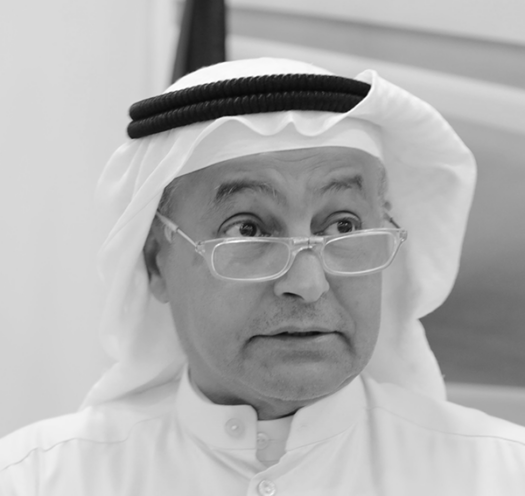

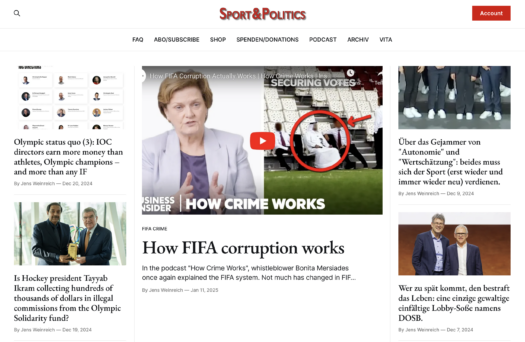
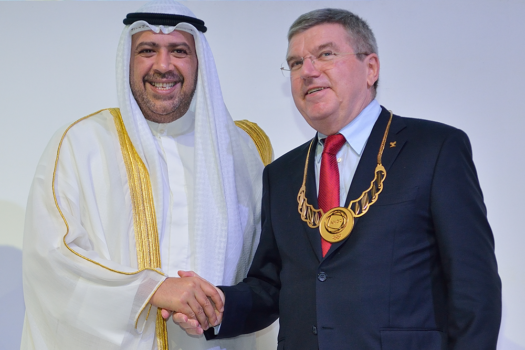
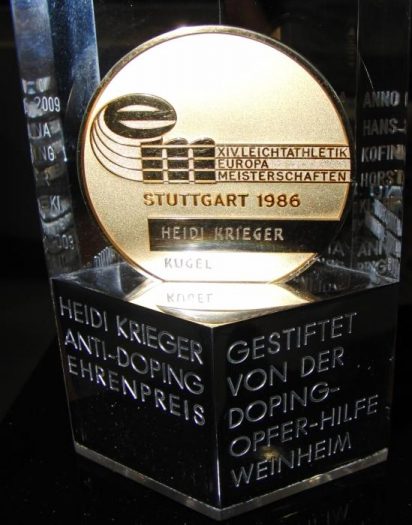
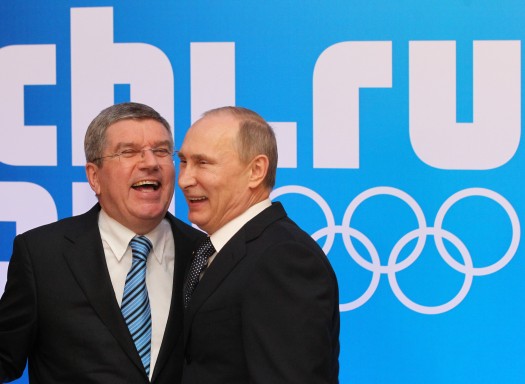
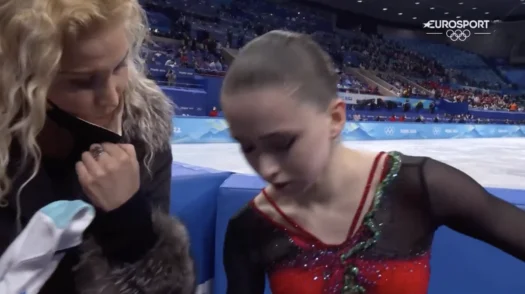
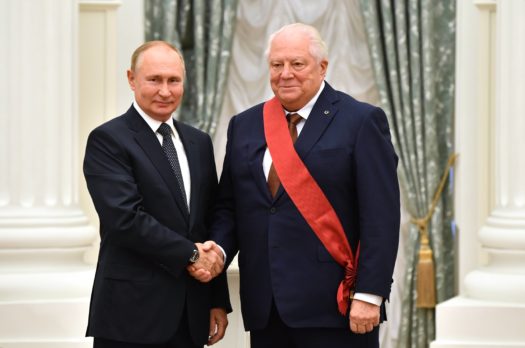
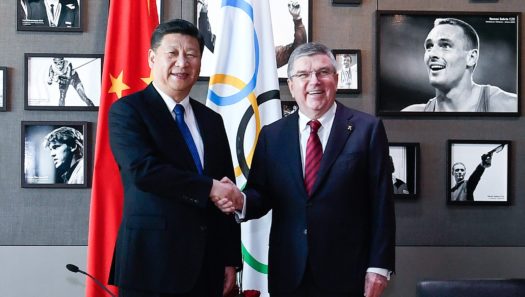
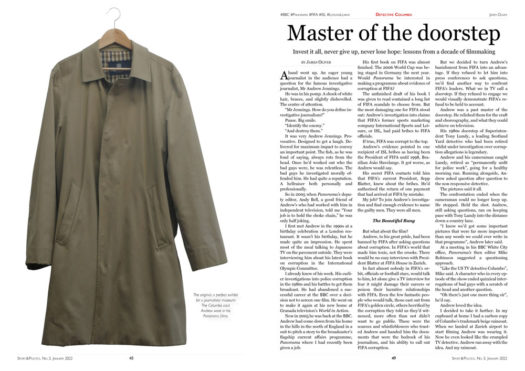
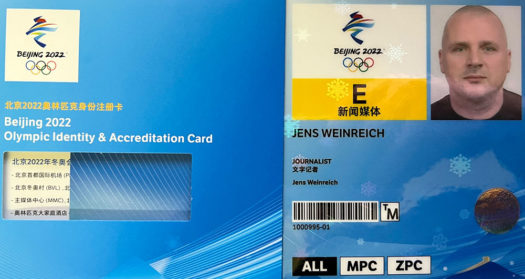
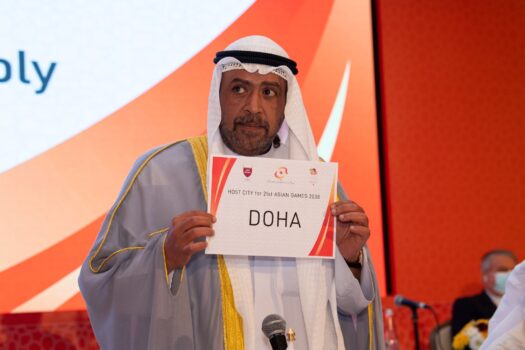
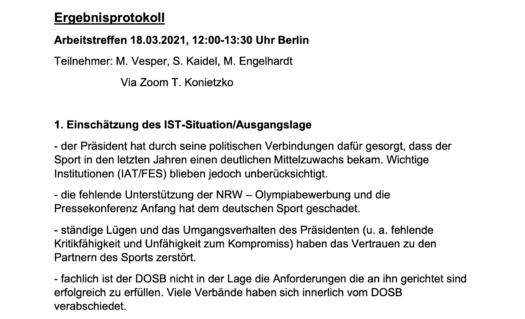
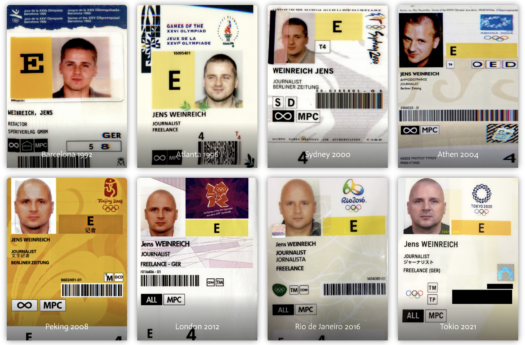
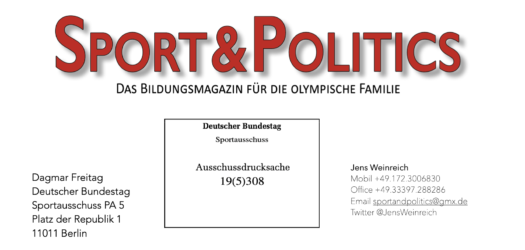
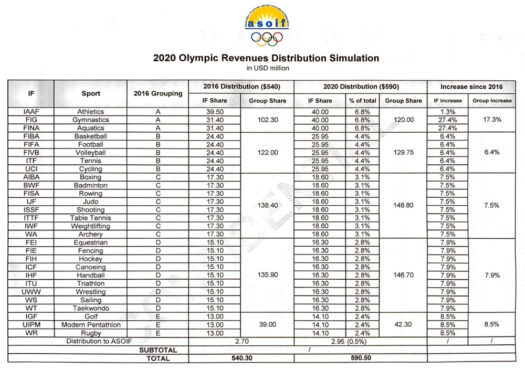
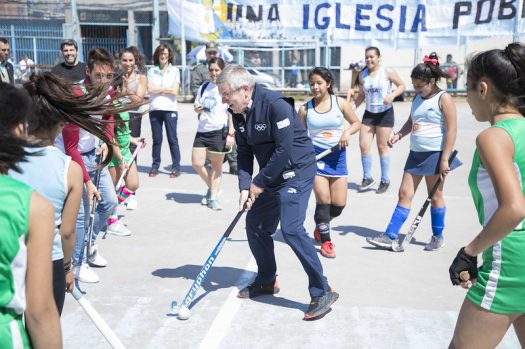
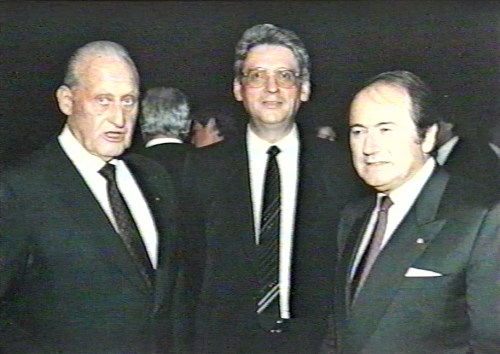
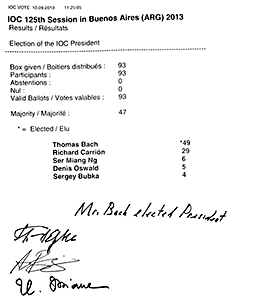
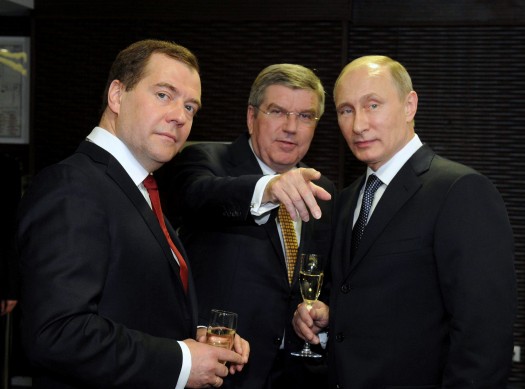
Pingback: George Gilmore
JW für den DLF: Reformpapier oder Wahlprogramm?
Pingback: George Gilmore
Pingback: Shane Harmon
Pingback: Mark Bradley
JW für den DLF : i) Warner und Bin Hammam, die Champagne einst abgesägt haben, sind nicht mehr in der FIFA.
ii) Für Schwung sorgt nun aber Champagne, der keine Fundamentalkritik übt, schon gar nicht an Blatter, für den er elf Jahre tätig war. Auch fordert er nicht die Aufarbeitung der kriminellen Machenschaften und etwa die sofortige Veröffentlichung zahlreicher brisanter Unterlagen.
iii) Champagne ist rhetorisch geschult, er spricht die Sprache der FIFA, die im Wahlvolk ankommt, so gut wie außer Blatter kaum jemand.
Zeit online (SID) : „Natürlich wäre er ein guter Präsident. Er wird aber eine andere Amtsführung haben als ich.“
Irgendwie werde ich den Gedanken nicht los, dass JSB eher Champagne anstatt Platini als seinen Nachfolger handelt. Vorausgesetzt natürlich, dass das hier wirklich Blatters letzte Amtszeit sein soll.
Wünsche dem Hauherren und allen Mitlesern nachträglich ein, vor allem, gesundes neues Jahr.
Rüttenauer for DFB-Präsident.
http://www.youtube.com/watch?v=V0ME_raELw4
Was man davon halten soll. Mäßíg originell. So richtig „viral“ ist das anscheinend noch nicht geworden.
Pingback: Hitesh Patel
JW für den DLF: Champagnes Wahlprogramm? – Zur Situation der FIFA
Pingback: Mohamed Hatimy
Pingback: Mohamed Hatimy
Pingback: tee tee ninème.
Pingback: tee tee ninème.
Pingback: Marc Leach
Interview mit Mark Pieth in der FAZ
„Herr Blatter ist uns relativ gleichgültig“
doch herr professor, blatter ist genau das thema. unter seiner führung ist die fifa zum intriganten und korrupten saustall geworden. blatter hat das voll zu verantworten, deshalb muss er sofort gehen.
aber offenbar gibt es ein agreement, dass sie ihn nicht antasten werden. haben sie das wirklich nötig, herr professor?
Pingback: Jérôme Champagne: “Which FIFA for the twenty-first century?” (II) : sport and politics
Pingback: Jérôme Champagne: “Which FIFA for the twenty-first century?” (III) : sport and politics
Pingback: Jérôme Champagne: “Which FIFA for the twenty-first century?” (III) : sport and politics
Pingback: Jérôme Champagne will FIFA-Präsident und Nachfolger seines langjährigen Chefs Joseph Blatter werden • sport and politics
Pingback: Jérôme Champagne beendet seine FIFA-Kampagne mit Attacken gegen Platini und die UEFA • sport and politics